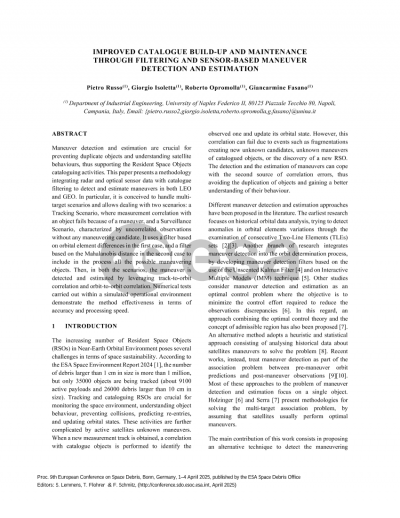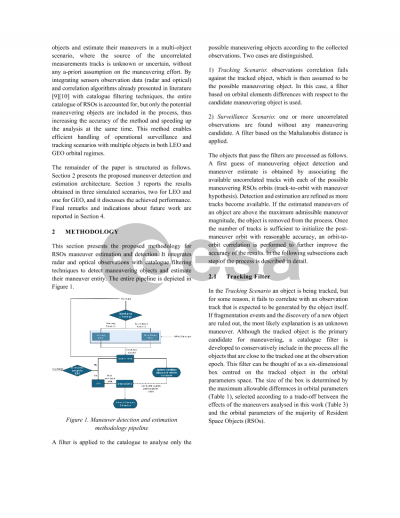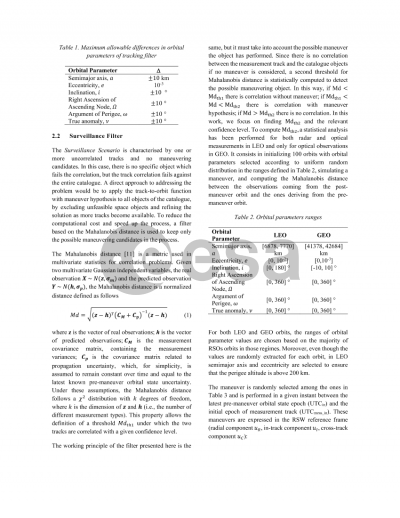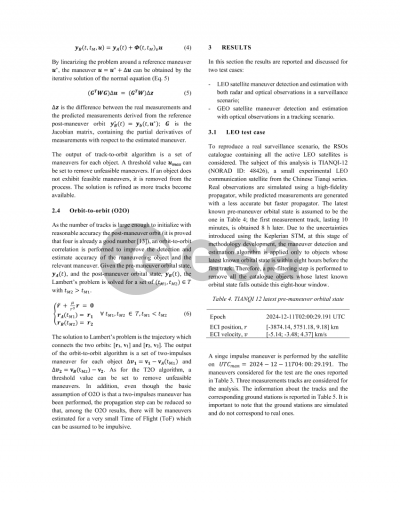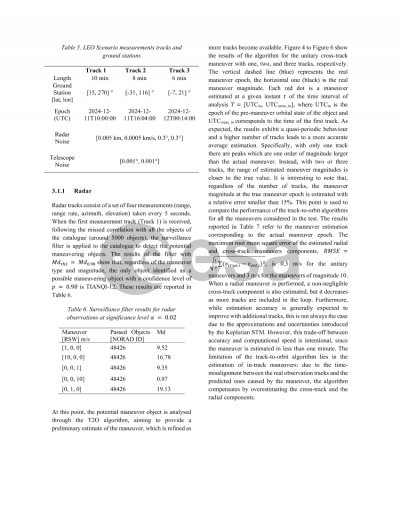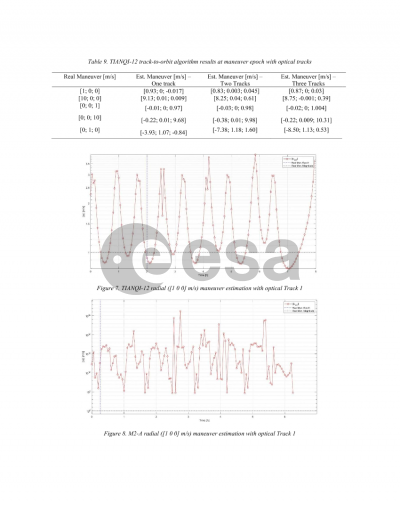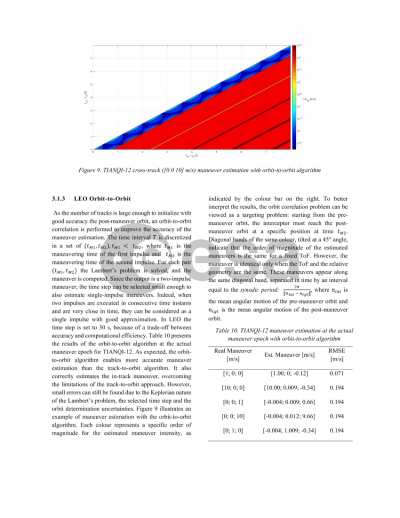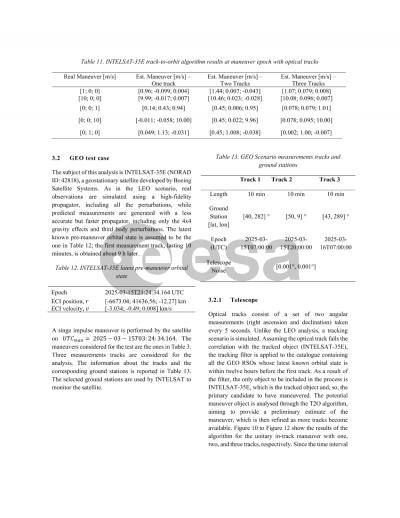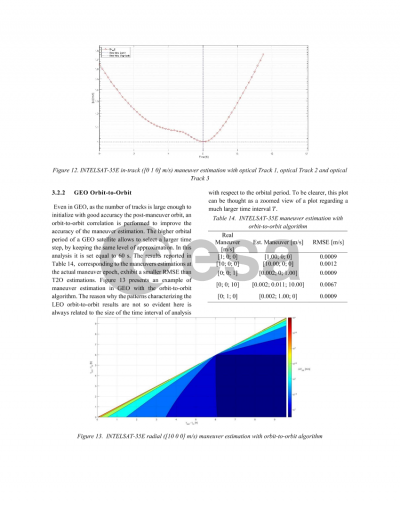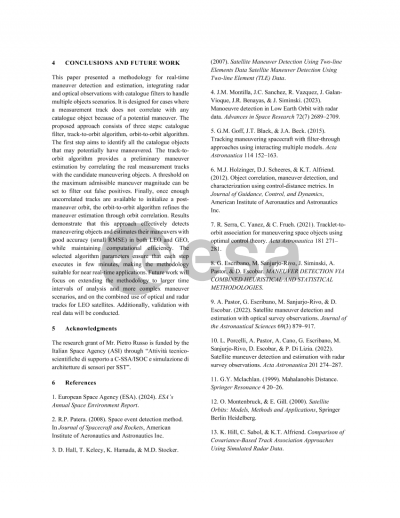Document details
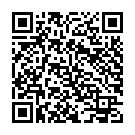
Abstract
Catalogue build-up and maintenance is a fundamental task related to Space Situational Awareness (SSA). Correlation of optical and radar observations collected by surveillance and tracking sensors is required to keep the catalogue updated. As the number of Resident Space Objects (RSOs) increases, this activity becomes more challenging, especially in the case of maneuvering satellites. Indeed, detecting and estimating satellite maneuvers is important to avoid duplicated objects and identify active objects behaviours, thus leading to a more complete characterization of the space environment. Different solutions to the problem of maneuver detection and estimation have been proposed such as optimal control methodologies [1], heuristical and statistical approaches [2] and correlation techniques [3][4].
This paper presents a methodology integrating sensors observation data (radar and optical) and catalogue filtering techniques to detect maneuvering objects and estimate their maneuver entity. The proposed approach is conceived to handle scenarios with multiple objects and is applicable to both LEO and GEO orbital regimes. Two cases are analyzed: 1) Tracking Scenario: observations correlation fails against the tracked object, which is then assumed to be the possible maneuvering object. A filter based on the orbital elements differences w.r.t. the candidate maneuvering object is applied to the entire catalogue to include all the close objects in the maneuver detection and estimation process; 2) Surveillance Scenario: one or more uncorrelated observations without any maneuvering candidate. A filter based on distance metric is applied to the entire catalogue to analyze only the possible maneuvering objects according to the collected observations.
In both scenarios a first guess of maneuvering object detection and maneuver estimate is obtained associating the available uncorrelated tracks with each of the possible maneuvering RSOs orbits. As the number of tracks is large enough to initialize with reasonable accuracy the post-maneuver orbit, an orbit-to-orbit correlation is performed to improve the detection and estimate accuracy.
The main contribution of this work consists of an alternative technique to detect the maneuvering objects and estimate their maneuvers, exploiting the use of catalogue filters. The development of catalogue filters is fundamental to include in the process only the possible maneuvering objects, thus increasing the accuracy of the method and speeding up the analysis at the same time. The performance of the method is evaluated in simulated operational environments in terms of accuracy and processing time, with results presented for both radar and optical observations in LEO scenarios, and for optical observations in GEO scenarios.
[1] Holzinger, M. J. et al. (2012). Object correlation, maneuver detection, and characterization using control distance metrics. Journal of Guidance, Control, and Dynamics.
[2] Escribano, G. et al. (2021). Maneuver Detection via Combined Heuristical and Statistical Methodologies. 8th European Conference on Space Debris.
[3] Pastor, A. et al. (2022). Satellite maneuver detection and estimation with optical survey observations. The Journal of the Astronautical Sciences.
[4] Porcelli, L. et al. (2022). Satellite maneuver detection and estimation with radar survey observations. Acta Astronautica.
Preview
